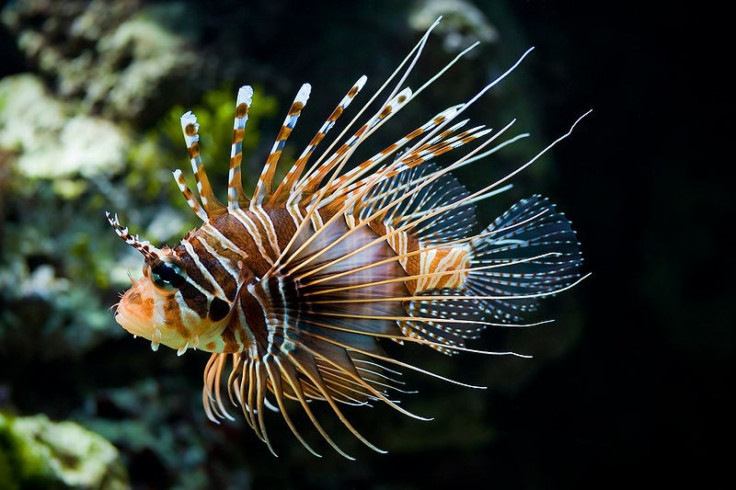Lionfish Invade the Gulf, Chefs Think of New Ways to Serve Them

The lionfish has invaded the Gulf Coast, making a cozy home in the seas of South Florida.
Divers now must take to the task of poaching these venomous, exotic fish so as to prevent destruction of the natural ecosystem.
We saw the first one four years ago, said Manny Menendez to the Miami Herald, who is one of many attempting to eradicate the fish from Biscayne Bay in South Miami. It's an exponential thing now. Every dive spot has them.
Killing these dangerous fish has even become a sport. Divers take part in contests to kill the most and the largest fish, winning prizes like spearguns and money.
The largest lionfish caught in the area measured in at 12 ½ inches.
Lionfish have been in the waters of South Florida since the 1990s, reports the Miami Herald, but sightings were actually relatively rare. Then, a few years ago, everything changed.
With the exponential proliferation comes danger. Lionfish are toxic. Their beautifully colorful mane of fins is actually venomous to the touch and will cause pain and swelling.
It can also cause vomiting, fever, and sweating; in some cases it has led to death.
Lionfish will also eat just about any other fish it comes in contact with.
The Miami Herald reports that the breed is capable of wiping out entire reef colonies of tropical fish, as it did in the Bahamas and Caribbean.
Since the lionfish is not native to the area, in the Gulf Coast waters of South Florida, the lionfish has no natural predators. Hence, its population has skyrocketed.
That is why the National Oceanic and Atmospheric Administration has launched the Eat Sustainable, Eat Lionfish campaign to help curb this growth.
The [Eat Lionfish campaign] is a major incentive and a way to provide access to information about the lionfish invasion and how to handle the fish, said Lad Akins, cookbook co-author and REEF's director of special projects, to FOX News. One of the best incentives is turning it into a food source.
There still is a little bit of a learning curve, he said. Most view it with more curiosity than fear. After the first bite, you can see it on their faces. It's an excellent fish. Kind of like hogfish - light and delicately flavored.
But, the lionfish is not like your regular seafood dinner of tuna or halibut.
The venomous creature must be cleaned and prepared by a skilled chef, who must use scissors and gloves to remove the injurious spines.
However, cooking can denature the venom. Individual just must use caution when handling.
Now restaurants in the Atlantic Coast and into the Caribbean Sea and Gulf of Mexico are featuring lionfish meals on the menu - like Fish House Encore in Key Largo that serves a fried appetizer of a whole fish with the spines intact; or the Key's Café that has Lionfish Chowder.
Akins' cookbook The Lionfish Cookbook, includes recipes for Lionfish Nachos, Spicy Lionfish, and, Akins' favorite, Lionfish Ceviche.
There's quite a demand both in local restaurants as well as big city restaurants like New York and Washington, said Akins.
A lionfish dinner will probably cost you are $26 to $29, compared to the $17 to $23 for other seafood meals.
But after eating one, you will surely feel like you conquered the world. Or at least the sea world.
© Copyright IBTimes 2025. All rights reserved.





















